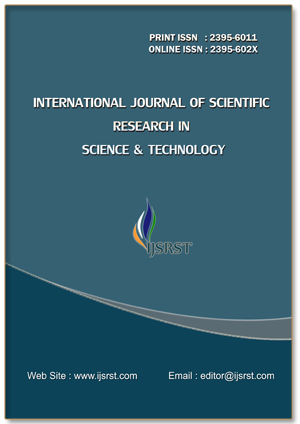Atmosclear (Ai-Ml De-Haze/De-Smoking Algorithm)
DOI:
https://doi.org/10.32628/IJSRST25121176Keywords:
Surveillance footage, Environmental factors, Noise reduction, Fog removal, Video enhancementAbstract
Surveillance footage quality is often degraded by environmental factors like noise and fog, impacting monitoring accuracy. AtmosClear is an AI-ML solution designed to enhance video clarity in challenging conditions. It employs deep learning techniques, including Convolutional Neural Networks (CNNs) for noise reduction and Generative Adversarial Networks (GANs) for fog removal, optimizing in real time to meet the high-speed demands of surveillance systems. AtmosClear's improvements in video clarity benefit both human operators and automated detection systems, enabling more accurate threat assessment across law enforcement, transportation security, and other surveillance applications.
Downloads
References
Narasimhan, S. G., & Nayar, S. K. (2003). Contrast Restoration of Weather Degraded Images. IEEE Transactions on Pattern Analysis and Machine Intelligence, 25(6), 713-724. DOI: https://doi.org/10.1109/TPAMI.2003.1201821
Hautière, N., Tarel, J. P., Lavenant, J., & Aubert, D. (2007). Automatic Fog Detection and Estimation of Visibility Distance through Use of an Onboard Camera. Machine Vision and Applications, 17(1), 8-20. DOI: https://doi.org/10.1007/s00138-005-0011-1
He, K., Sun, J., & Tang, X. (2011). Single Image Haze Removal Using Dark Channel Prior. IEEE Transactions on Pattern Analysis and Machine Intelligence, 33(12), 2341- 2353. DOI: https://doi.org/10.1109/TPAMI.2010.168
Shi, Z., & Li, C. (2019). Single Image Dehazing with a Generic Model-Agnostic Convolutional Neural Network. Pattern Recognition, 88, 291-300.
Li, B., Peng, X., Wang, Z., Xu, J., & Feng, D. (2017). AOD-Net: All-in-One Dehazing Network. Proceedings of the IEEE International Conference on Computer Vision (ICCV), 4770- 4778. DOI: https://doi.org/10.1109/ICCV.2017.511
Zhang, K., Zuo, W., Chen, Y., Meng, D., & Zhang, L. (2017). Beyond a Gaussian Denoiser: Residual Learning of Deep CNN for Image Denoising. IEEE Transactions on Image Processing, 26(7), 3142-3155. [7] Goodfellow, I., Bengio, Y., & Courville, A. (2016). Deep Learning. MIT Press. DOI: https://doi.org/10.1109/TIP.2017.2662206
Lim, B., Son, S., Kim, H., Nah, S., & Mu Lee, K. (2017).Enhanced Deep Residual Networks for Single Image Super- Resolution. Proceedings of the IEEE Conference on Computer Vision and Pattern Recognition Workshops, 136- 144. DOI: https://doi.org/10.1109/CVPRW.2017.151
Chen, J., Fang, Y., Zhang, Z., & Zhao, G. (2019). Real- Time Low-Light Video Enhancement via Progressive Regularization and Refinement. IEEE Access, 7, 123235- 123246.
Wang, C., Xu, C., & Zhou, H. (2020). Deep Learning for Real-Time Video Enhancement in Surveillance Applications. IEEE Transactions on Circuits and Systems for Video Technology, 30(10), 3405-3416. DOI: https://doi.org/10.1109/TCSVT.2020.3021320
Wang, Z., Bovik, A. C., Sheikh, H. R., & Simoncelli, E. P. (2004). Image Quality Assessment: From Error Visibility to Structural Similarity. IEEE Transactions on Image Processing, 13(4), 600-612. [12] Huynh-Thu, Q., & Ghanbari, M. (2008). Scope of Validity of PSNR in Image/Video Quality Assessment. Electronics Letters, 44(13), 800-801. [13] Liu, X., Wu, Z., & Guo, Z. (2020). Challenges in Training Deep Learning Models with Limited Environmental Datasets. Pattern Recognition Letters, 131, 129-136. DOI: https://doi.org/10.1049/el:20080522
Roy, T., & Biswas, S. K. (2019). Computational Complexity and Limitations of Real-Time Fog Removal Techniques. Journal of Real-Time Image Processing, 16(3), 673-683.
Cai, B., Xu, X., Jia, K., Qing, C., & Tao, D. (2016).DehazeNet: An End-to-End System for Single Image Haze Removal. IEEE Transactions on Image Processing, 25(11), 5187-5198. DOI: https://doi.org/10.1109/TIP.2016.2598681
Zhang, J., & Tao, X. (2021). Multiscale Feature Extraction for Environmentally Diverse Surveillance Video Enhancement. IEEE Transactions on Image Processing, 30, 7555-7566. DOI: https://doi.org/10.1109/TIP.2021.3113183
Downloads
Published
Issue
Section
License
Copyright (c) 2025 International Journal of Scientific Research in Science and Technology

This work is licensed under a Creative Commons Attribution 4.0 International License.
https://creativecommons.org/licenses/by/4.0





